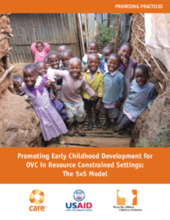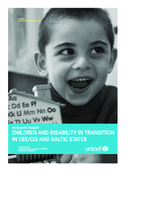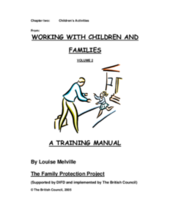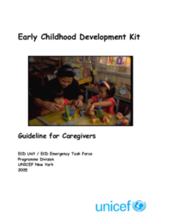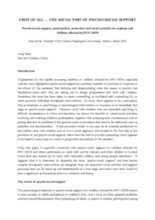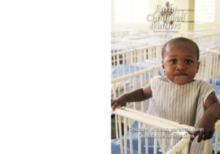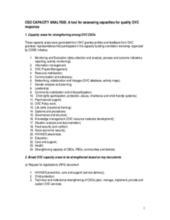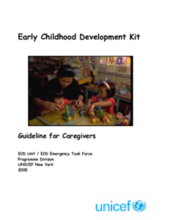Displaying 451 - 460 of 490
Overview of a CARE’s 5x5 Model, designed as an early childhood development intervention for orphans and vulnerable children (OVC) in order to provide long-term physical, socio-emotional, and cognitive benefits.
This is a chapter from the United Nations Secretary-General’s Study on Violence Against Children that specifically explores the factors contributing to violence against children in institutional care and justice institutions. This chapter includes sections on the sources of violence against children in institutional care, the impact of institutional care on children’s health and development, and the populations of children most likely to become institutionalized.
A list of bi-lateral and multilateral funding agencies for child protection. Includes names, email addresses, and particular area of focus.
Report presents and analyzes new research and data around children with disabilities in the region, the effects of institutional care, and the need for family support services.
Guidance and examples of group activities which promote development and self-esteem, and the role of the worker in providing activities on a regular basis.
Guidelines for caregivers of children in emergency situations, with a focus on the role of play in childhood learning and development. Includes a comprehensive list of suggested activities.
Emphasizes the social dimensions of psychosocial support interventions, including participatory groupwork and a focus on reducing stigma and discrimination. Argues that psychological interventions such as counseling should never be a first step.
Collection of articles highlighting suggestions on how to improve existing mechanisms for providing adequate care. Major article on the current state of international thinking on children without parental care.
This document provides a tool that was used to assess broad capacity areas for quality OVC response in Uganda.
Summary guidance on the use of therapeutic language and the role of play and art in helping children’s development, and in responding to children exposed to trauma.

